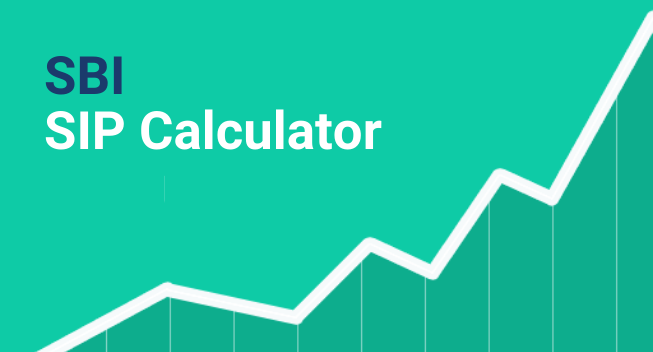When we talk about investing in Mutual Funds, SIP (Systematic Investment Plan) works as a key discipline approach in it. Only the investor has to set aside a regular fixed amount of money which will help in long-run generating capital including the practice of savings as well. In the past few decades industry of Mutual funds in India is doing well and shows rapid increments as per the reports of the Association of Mutual Funds in India.
While or before investing in SBI SIP mutual funds, the SBI SIP calculator works as a tool to create a financial cushion for the investors. It will help to achieve his/her long-run as well as short-run financial objectives and goals as it will provide an accurate estimation of the monthly installments which an investor has to provide each month while investing in SBI SIP investment.

SBI SIP Interest Rate
The main feature and key role of the mutual fund is SIP in which an investor can invest a small amount of money for regular intervals for the short-term as well as long-term. Here, the returns expected from the large-cap equities are on an average of 12-18% whereas a return expected from the mid-cap is 14-17%. On the other hand, a return is expected of 6-9% p.a in case of long-term debt-based mutual funds.
How to calculate returns on SBI Mutual Funds?
With the help of the SBI SIP calculator, an investor can easily calculate his/her returns on SBI mutual funds by using its four variables which anticipated the post period of investment consisting of the amount of SIP, expected rate of returns, compound rate of returns, and the total number of installments done by the investor. Now, putting all these four variables in the given for calculating the returns we get,
FV = [P * r * (1 + i) N – 1/i] * (1 + i)
Here,
FV = future value.
P = amount of SIP.
R = expected rate of returns.
I = compounded rate of return.
N = total value of installment done.
If the investor intends to do the calculation of his/her SIP returns from the above formula manually then it would result in complex calculations and may often lead to the wrong results moreover it would be time-consuming. Therefore, it is better to calculate the SBI SIP return with the SBI SIP calculator for accurate results even it will be time-saving as it works effectively. There is a list of projected SIP returns based on various investment duration are shown below in the given table to assume the future value of investing in SBI SIP investment.
SBI SIP Returns
Projected SIP returns based on various investment duration to assume the future value of investing in SBI SIP investment
| SBI SIP Amount | Duration | Future Value |
| 2000 | 25 years | 38 lacs |
| 2000 | 22 years | 25.9 lacs |
| 2000 | 20 years | 20 lacs |
| 2000 | 18 years | 15.3 lacs |
| 2000 | 15 years | 10.1 lacs |
| 2000 | 12 years | 6.4 lacs |
| 2000 | 10 years | 4.6 lacs |
| 2000 | 8 years | 3.2 lacs |
| 2000 | 5 years | 1.6 lacs |
| 2000 | 1 year | 0.3 lacs |
SBI Mutual Funds SIP Calculator
SIP is done by the mutual funds in a planned way which is almost similar to the RD. An amount toward the scheme of the mutual fund has to be deposit each month wherein an investor invests in a lump sum amount significantly in a simple step. Investing in SIP has slightly low-risk factors and it is also strategic. Below are some points to understand the importance of the SIP calculator of SBI mutual funds. Let’s have a look at these basic points:
- In regards to the SIP returns, the use of the SBI SIP calculator will assist the accurate estimates to the investor. However, mutual funds are subjected the market risks therefore, the results may be slightly risky sometimes.
- If an investor chooses the option of doing the SIP calculation manually, it may be quite complicated to do so and will be time-consuming as well. However, the calculation in the SIP calculator is effective, easy, and time-saving.
- The SBI SIP calculator work conveniently with providing accurate results which are hassle-free and easy to access and play an important role in future and financial planning of the investor.
How to use SBI SIP return calculator?
Using the SBI SIP returns calculator is simple, easy, convenient, and easy to access anywhere and anytime. The calculation is done in this calculator in few simple steps and the result will be right away. The users need to put the variables respectively. In that, the user has to put the amount of the SIP, expected rate of returns, compound rate of returns, and also the total number of the installment done by the user within the period of calculation and by clicking the calculate or enter option the result will appear on the screen within few seconds. You will get the accurate result without wasting much of the time.
SBI SIP Investment Plans
The name of the SBI SIP investment plans are listed below:
- SBI Banking and Financial Services Fund
- SBI Focused Equity Fund
- SBI Healthcare Opportunities Fund
- SBI Large Mid-cap Fund
- SBI Magnum COMMA Fund
- SBI Magnum Equity ESG Fund
- SBI Magnum Global Fund
- SBI Magnum Multicap Fund
- SBI Small Cap Fund
- SBI Technologies Opportunities Fund
All the above schemes are the list of the SBI mutual funds SIP equity bonds and only require minimum investment of amount of Rs.500/-.
Frequently Asked Questions
Q1. What is the SBI SIP investment online link and how to use it for investing in SBI SIP online?
Ans. To visit the official website of the SBI mutual fund SIP portal online the user must follow the given instructions below:
- First, the user must visit the official website portal of the SBI SIP online which is SBI MF, There the user has to click on the “Invest Now” option.
- Secondly, the user must log in or sign-up as a new or existing user or may also continue without signing up/logging by alternatively using the PAN number and continue as a guest user.
- Third, the user has to download the KYC form and fill up all the necessary details in it.
- At last, the user has to submit the duly filled form to the nearest SBI branch. The user can reach the nearest branch by taking help from the customer care phone number or e-mail.
Q2. What are the advantages of the using SBI SIP calculator?
Ans. The SBI SIP calculator works as a practical tool that helps the SBI mutual fund investor with financial planning. The advantages of using the SBI SIP calculator are listed below:
- This calculator has typically spot-on accuracy which enables to plan of the future finances of the investor according to his/her choice.
- It saves a lot of time and works efficiently and effectively without any headache.
- The SBI SIP returns calculator is easy to access anywhere by anyone and anytime being an online tool feature in it.
Q3. Which one is better Lump-sum investment or SIP?
Ans. Both investments consist of the pros and cons approaches. The investment in the lump-sum investment is made one time only and the risks are also slightly higher than that of SIPs whereas SIP has a higher degree of involvement of investors due to the factor of financially less taxing in it.
Q4. Explain SBI mutual funds through SIP?
Ans. Systematic Investment Plan (SIP) allows the investor to invest in a small amount of money into SBI mutual funds periodically which may be weekly, monthly, quarterly, half-yearly, or yearly. It will also allow monitoring the time-to-time fund’s performance of the investor that helps to decide the level of savings and if the investor has the financial liabilities to repay such as home loan, personal loan, etc hence, investing in the SBI mutual funds through SIP will be beneficial as the high inflation period of the SIP may hamper the financial position of the individual.
Q5. Is SBI mutual funds SIP are safe to invest?
Ans. State Bank of India (SBI) is a reputed firm of investment in funds which offers many outperformed benchmarks mutual funds schemes and therefore has the trusted SIPs investment depending on the performance of the various mutual funds with its investments horizons and risks tolerance capacity an investor chooses to invest in. By keeping in mind the factor that the SIP is volatile in terms of market risks and generally used for equity funds.
